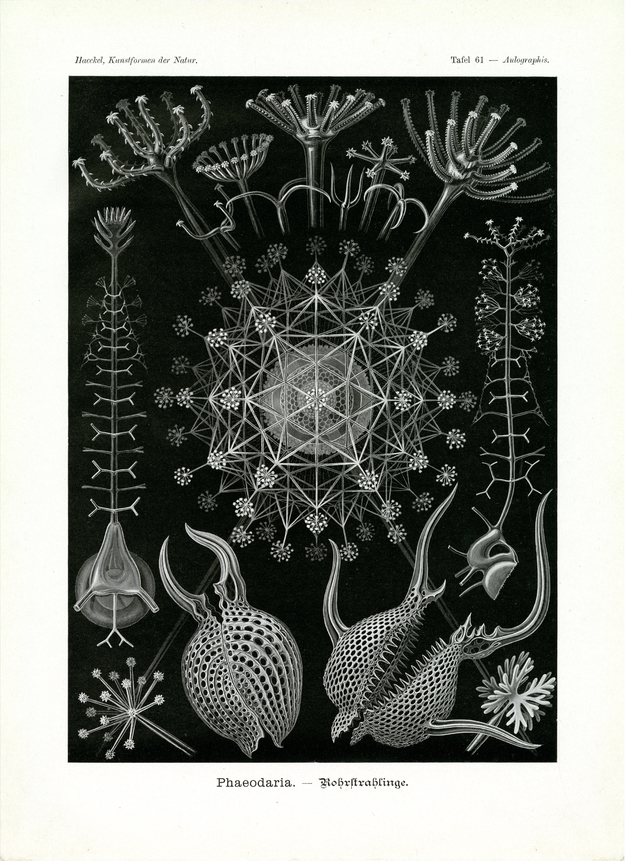Translation of the original German introduction by Ernst Haeckel:
Phylum of Protozoa (Urtiere); - main class of Rhizopoda (Wurzelfüßer); - class of Radiolaria (Strahlinge); - legion of Phaeodaria (Cannopylea).
The huge diversity of Phaeodaria or Cannopylea, of which about 500 species have already been described, have in common the peculiar structure of their unicellular living soft body. Its inner part, the ‘central capsule’, encloses the huge, rounded nucleus and is distinguished by a peculiar ‘radiant lid’ with central ‘mouth tube’, that is not seen in any other Radiolaria (compare Plate 1, fig. 4 and 6). The outer part of the soft body, the gelatinous cover of the cell (Calymma), covers a dark, in most cases brown or olive green pigment cell body that is resting on the ‘radiant lid’ (Phaeodium). This ovoid formation of the distinctive soft body contrasts with the huge diversity of the usually siliceous skeleton that is excreted by it; its representative forms have been illustrated on plate 1. Usually the skeleton is composed of hollow siliceous valves and forms a grill shell with radial flagella, hooks and other appendages used for catching prey. The delicate species presented on plate 61 belong to various families, Aulacanthida (fig. 1-8), Phaesphaerida (fig. 9-12) and Phaeoconchia (fig. 13-16).
Translation by VR Translators Bangalore
We've scanned the original lithography at 1200dpi on the Epson A3 scanner of A3 scanner huren. You can download a 400dpi JPEG here.
